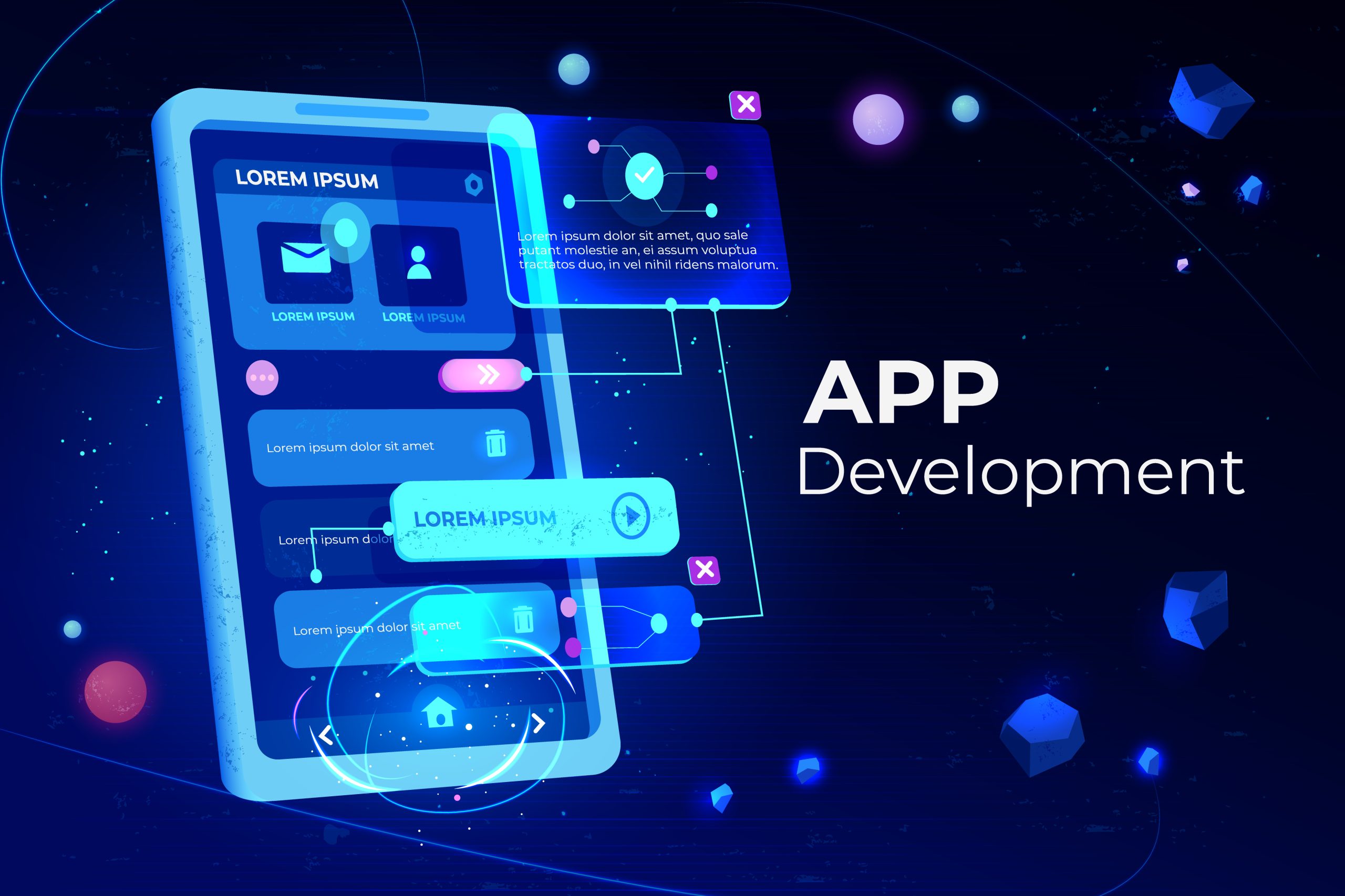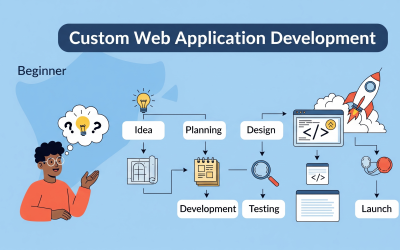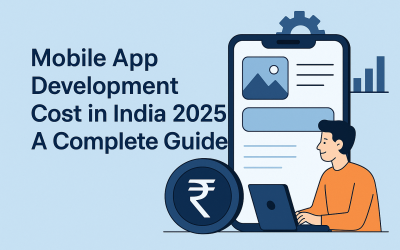In 2024, the development of applications for mobile devices is still at the forefront of an innovative environment, because companies from different industries realize the significance of applications for interaction with customers and for work. Altogether, given the fact that there is steady growth in the usage of mobile applications highlighted by 384. 9 billion app downloads in 2021 and with this year’s expected revenue of $935 billion USD, the need for durable mobile application development platforms is ever increasing.
It is even more important to choose the most suitable platform to serve as the application’s foundation because it can be the factor that determines the outcome of the project and its compliance with the business goals and objectives.
The right Mobile Application Development Platform not only helps companies gain cost benefits by eliminating multiple tools that they need to invest in individually, but also cuts down time and effort required for specific development. In this blog you will find everything you need to know when deciding on the best development platform for your mobile application, such as the ONE suited to your business strategy and technology stack.
What Are Mobile Application Development Platforms?

Mobile application development platforms refer to communication software, which assists developers in the development of, testing, and deployment of procedures of applications that operate on various native operating systems such as iOS, Android, and Windows, among others. These tools will enable organizations to build apps through leveraging features like pre-developed modules, wizards, APIs, and testing tools—which will help in the development of effective and efficient apps.
There are 3 main types of mobile app development platforms:
Native App Development Platforms
They were designed for developing applications that are exclusive to the particular mobile operating system, be it iOS or Android. By choosing native platforms, developers can have native API and Utilities that will allow them to adjust the applications for the better performance on the aimed OS. These are typically developed to offer the top-notch performance and convergence with the device’s characteristics, which should be ideal for applications with a high level of interactive response and API-based access to the device’s capabilities.
Cross-Platform App Development Platforms
These platforms enable a developer to develop applications that can operate on many OSs with the same code. This approach is quite friendly to the pocket as well as time(resources) as it gets rid of having to go ahead and create two totally different applications for the two different platforms. Cross-platform solutions like React Native, Xamarin or Flutter allow developers create applications that run fine both on iOS and Android platforms and allow businesses to reach a greater circle of clients without, of course, investing in the development of the application twice.
Hybrid App Development Platforms
This kind of apps is a mix of native and web elements; this feature makes hybrid applications more versatile. Developed with HTML, CSS, and JavaScript, hybrid applications are covered with native UI layer and so they can be used on any platform. Hybrid apps provide the functionality of native apps and less rigidity of web apps, that is why they are often used for projects that have to be launched on many platforms and provide the same interface.
Benefits of Using Mobile Application Development Platforms
Using mobile application development platforms offers several key benefits for businesses: Using mobile application development platforms offers several key benefits for businesses:
- Ease of Use: These provide ready interfaces with elements, which make development easier irrespective of the organizations’ experience in the development of mobile applications.
- Cross-Platform Compatibility: They allow a developer to come up with application that will be able to run on different operating systems but the same code.
- Cloud Integration: Almost all the platforms involve cloud services to varying degrees thereby reducing the need for firms to create the infrastructure.
- Testing and Debugging Tools: Testing and debugging tools which are integrated into the platform allow apps to be of high quality and are optimized to run in different devices and operating systems.
Top 5 Mobile Application Development Platforms for 2024

As we now know the benefits of application development platforms, here is a brief on the 5 best platforms for mobile application development in 2024:
1. React Native:
It is developed by Facebook supports creation of apps for multiple platforms using JavaScript framework and React. Mainly, it is highly appreciated for its short development cycle and active community support, so it can be ideal for projects such as social networks or e-commerce applications. Still, there are likely to be performance issues compared to fully native applications, and scaling large applications can be difficult. Some of the apps developed with the use of React Native include Facebook application and Instagram.
2. Flutter
It is a UI toolkit developed by Google that helps build beautiful and performance apps with a single code base in Dart. Its strengths are that it has a large number of widgets and it is fast. However, its newer ecosystem might have a fewer number of third-party libraries than other platforms. The material design works well in apps that need to have UI parity with the operating systems and this is evident with Google Ads and Alibaba.
3. Xamarin
It is an application platform owned by Microsoft using C#, and . NET for building native apps for iOS, Android and for Windows as well. It is closely tied to Microsoft products and lets you share code between platforms but leads to apps being more hefty and slower than if built with native tools. Xamarin is best for the complex business applications and those, which are built inside the Microsoft environment, for example, UPS and Alaska Airlines.
4. Swift
Apple’s language for creating iOS applications offers a good balance of performance and safety with easily understood syntax. It’s great for applications that are designed exclusively for iOS and need tight integration with other Apple’s services. The main weakness of Swift is its rather narrow applicability in applications other than those developed for Apple products. Smart applications such as Lyft and Linked-In are created employing Swift.
5. Kotlin
backed by Google for Android apps development, has been defined as a modern language based on Java syntax, with more concise syntax and full Java compatibility. It increases production efficiency but comes with some complexities if the programmer is not well versed in Java. Kotlin is perfect for Android applications, and some popular examples are Pinterest and Trello applications.
How to Choose the Best Mobile App Development Platform for Your Project

Since we are now aware of the top 5 mobile application development platforms of 2024, below I have shared how you can choose the best platform for your project according to your business needs:
- Project Needs Analysis: Determine the constraints including clients or users, fundamental capabilities, and performance characteristics. For instance, if you have a desire to receive high performance and the native features, then it can be necessary to use Swift for iOS. If cross-platform development is what you are looking for, then React Native may be your best option.
- Platform Strengths vs. Project Requirements: As a rational decision-maker, choose the platform that best meets your needs and aligns with the platform’s distinctive competencies. Flutter stands out in building appealing apps with the same look of the user interface for both operating systems. When it comes to compatibility and integration with Microsoft tools, Xamarin is ideal for such projects.
- Cost-Benefit Analysis: Evaluate the costs of development tools and resources in comparison to the offered options. React Native could be cheaper due to its re-usability of components, although native development could be costly but efficient.
- Community & Support Considerations: This is the reason why it is important to select platforms that are more engaged by the client community and updated more frequently. Frameworks like Flutter and React Native are open-source projects with lots of followers and documentation both for the development and for the resolving of issues.
Emerging Platforms to Watch in 2024
In 2024, a lot of emerging mobile app development platforms are gaining attention apart from the regular top mobile app development platforms, some of which are:
- Vite: Currently, it is gaining popularity because of its speed of creation and its lightweight architecture, it is suitable for those applications which must be fast and developed for mobile platforms. Its rapidly increasing robust ecosystem tends to offer improved performance and shorter development times.
- Svelte Native: Based on Svelte, Svelte Native provides native mobile app creation with better code quality and a user-friendly system compared to conventional frameworks. This is said to be especially good on performance and comes with a relatively easy to use interface.
- NativeScript: It is not a relatively young framework but it is still growing, enabling creating high-level native apps for iOS and Android using JavaScript, TypeScript, and Angular. Due to these improvements in performance and integration, it is considered as a platform of interest.
These platforms are coming up as significant players because they are innovative as measured by their ability to reduce the complexity of creating high-performance apps.
Conclusion
Together, in this guide, we have looked at the best mobile application development platforms for 2024, the advantages, and suitable applications for React Native, Flutter, Xamarin, Swift, and Kotlin. We also explained how to select an appropriate platform, focusing on the type of project, platform capabilities, costs, and the users’ tendency. Some of the newly formed platforms included in the list of recommendations for development platforms were Vite, Svelte Native, and NativeScript and developed hype for the upcoming year.
Thus, before you make your final decision, be sure to properly examine your needs and it is also wiser to consult with professionals. To get more detail or seeking professional help, visit these platforms or contact SaiSatwik for professional Mobile development consultancy.
FAQ
What is the best mobile app development platform?
The best mobile application development software varies depending on the requirements for the project, although there are three that are preferred widely; React Native, Flutter and Swift for iOS.
What is mobile application development platform used for?
Mobile application development platforms are solutions employed to develop, integrate, and deploy applications in different OS.
Are mobile app development platforms suitable for both iOS and Android?
Yes, there are many platforms, which are used for the development of the mobile apps that are compatible with both iOS and Android such as React Native and Flutter.
Which platform is best for building a cross-platform app?
React Native is one of the best frameworks for develop cross-platform applications and Flutter is just as good for the same operations with both operating systems.
Can I switch platforms after starting development?
It is difficult and time consuming to change half way through the development process so it is recommended that the right system is selected right from the start.




0 Comments